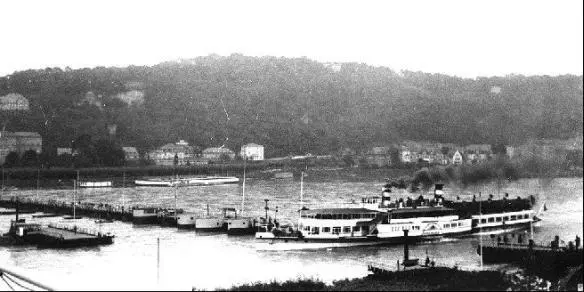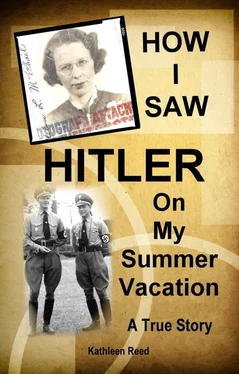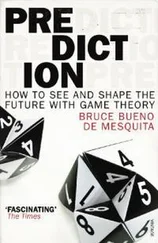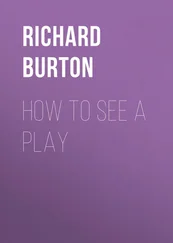Place: Paris
Weather: Fine.
TIMELINE: Hitler demands that Czechoslovakia immediately concede the Sudetenland portion of its country to Germany.
Today, our first visit was to the Conciergerie, which was the prison for those to be slain by the guillotine. Our French-speaking guide talked so distinctly that I had no trouble understanding him. It seems that the prisoners were of two classes — those who could pay for their rooms, and those who could not. The latter class was herded together in a long dark disagreeable cell. Around the corner from the cell were the stairs leading up to the tribunal where all were judged. Subsequently, the prisoners went directly to the court and thence to the guillotine. We saw the cells that housed Marie Antoinette, Robespierre and others. In Marie’s room, there was a special niche for the guards to stand — just opposite her dressing table, however she was allowed to have a screen for privacy. A chapel now contains all sorts of relics, including the guillotine knife, Marie Antoinette’s chair, and the pinpricked note by which she attempted to escape. Our next visit was to the Sainte Chappelle, which is all that is left of the old Palace of Justice. This beautiful 13th century church is a perfect example of Gothic architecture in Paris. The colors of the glass windows seem to penetrate your soul, producing a magical effect. These windows are carefully taken down in times of war, even though it takes years to put them back in place.
Back in Paris, we visited the Pantheon where we viewed the tombs of Rousseau, Victor Hugo, Voltaire, Zola, and others. We strolled through the Luxembourg Gardens then shopped for cheap suitcases to hold our many purchases. The suitcases we bought are not much more than cardboard boxes with handles, but they will do. We ended our afternoon at the Café de la Paris, sipping Dubonnet and watching the crowds throng by. They say if you sit here two hours, you will see someone you know. Our evening out included a lavishly produced show at the Folies Bergere. It was indeed an elaborate spectacle, which reminded me greatly of the Ziegfeld Follies — with a little more nudity. I think I enjoyed the Opera more.
Date: September 2, 1938
Place: Paris
Weather: Fine.
After breakfast, a shopping excursion was followed by a visit to the American Embassy. We were to meet a Mr. Lester Mallory, to whom I had a letter of introduction. He took us to lunch at the famous Rougier Rotisserie. He ordered a strange mixture of lobster and fish, called Bouillabaisse, which is one of the typical dishes of Southern France. We also sipped wine from the South of France, and enjoyed a dessert of fruit compote in cognac. It was an excellent lunch and Mr. Mallory made an interesting host. We parted at 3 p.m., so there was not much left of the afternoon. Of course, I made a special trip back to the Louvre to see the Venus de Milo. After dinner at Pam Pam, it is time to finish packing and so to bed.
CHAPTER FIVE
Germany
Shocks and Surprises — What’s a Girl to Do?
Date: September 3, 1938
Place: Paris to Cologne
Weather: Fine.
After saying good-bye to our nice little chambermaid, and Mr. Roffatti, we taxied over to the train for Cologne. Our basket lunch never materialized, so we nibbled on chocolate and made that do until dinner. We arrived in Koln (Cologne) at 5:30 and were happy to see our representative from the Eden Hotel. It is a lovely Hotel, situated near the station and the Cathedral. Everything seems so very clean here. We have what looks like a huge pillow all over the bottom portion of our bed. I have my legs tucked under it now and they are warm as can be.
We enjoyed a fine dinner at the hotel, which included steak, soup, and five vegetables. After dinner, we purchased a Rhine River Panorama booklet then walked along the banks of the Rhine. Tomorrow we take off for Coblenz by steamer boat.
Date: September 4, 1938
Place: Cologne to Coblenz
Weather: Fine, but definitely chilly.
What a day! We left Cologne at 8:00 a.m. After getting our belongings settled, we sat down at one of the tables to enjoy our 6-½ hour Rhine River journey. The outdoor seating consisted solely of tables and chairs. Due to the chilly weather, most of the table tops soon contained cups of hot coffee for warming the passengers. We found one other English-speaking couple on the boat. There were flags of all countries at the tables, but since we were with our English friends, we sat under the British flag. A mist hovered on the Rhine until after lunch, but nonetheless, the trip was captivating. We glided past Bonn, (Beethoven’s birthplace,) in addition to many unpronounceable mountains and castles. Lunch was served in the dining room downstairs. The famous Rhine salmon was delicious! We are told that they are plentiful in this river. There was a big party of German people having the best time. We have decided that we really like the Germans! They are most jovial, very polite, and the most cordial people of any country we have visited so far. By the time we arrived at the Riesen Furstenhof hotel in Coblenz, it was 4 p.m.
Our grand top-floor room in Coblenz faces the Rhine, and has lovely vistas and a view of the pontoon bridge shifting to allow the boats to pass through. We never grew tired of watching sections of the bridge-on-boats move away and back again.

Pontoon bridge on the Rhine River at Coblenz
The city of Coblenz is one of the places where American soldiers were stationed after the last war, so the citizens are somewhat accustomed to having English-speaking people around. Curiously, three little girls followed us on our stroll through the town, pointing their fingers at us and laughing. We walked up to the very imposing statue of Wilhelm I, on horseback, which was situated at the confluence of the Rhine. It is THE landmark of Coblenz, and can be seen silhouetted against the sky for miles around. It was interesting to note the different colors of water at the confluence of the two rivers in Coblenz. The Moselle was tinted a much darker green than the Rhine.
After an excellent dinner at our hotel, with music by a German orchestra, we set out to meet our English friends (from the Rhine River ride,) at the bridge. We planned to walk together to the Weindorf Restaurant for some music and dancing. While we were waiting on the upper part of the bridge, four fellows came by and insisted that we go to the Weindorf with them! They would not take “No” for an answer! After I struggled with my English, German, French, and sign language to indicate that we were waiting for friends, two nearby English girls, conveyed our message. We thought things had settled down for a bit, until two drunks came staggering by and they scared us all over again. Since our other friends were late, we continued on to the Weindorf with the two new English friends, one of whom could speak German very well. We found a table outside and drank German champagne which tasted like cider.
The Weindorf turned out to have a party atmosphere and we had such fun! Handsome fellows would come up and stand before you, bow deeply, then click their heels and ask you to dance. You felt impelled to dance with them when they asked you in such a charming manner. It was the thing to do! They were excellent dancers — one and all! Some of the German musicians wore huge comical straw hats. We sang at the table and we sang while dancing. The two English girls went home and left us with two fellows. Margy was with a blonde man named Helmut and I spent my time getting to know a dark-haired fellow called Toni. Helmut was really the best-looking man there but Toni had such romantic looking eyes. They wanted to take us home, but being a little wary of that, we declined.
Читать дальше













